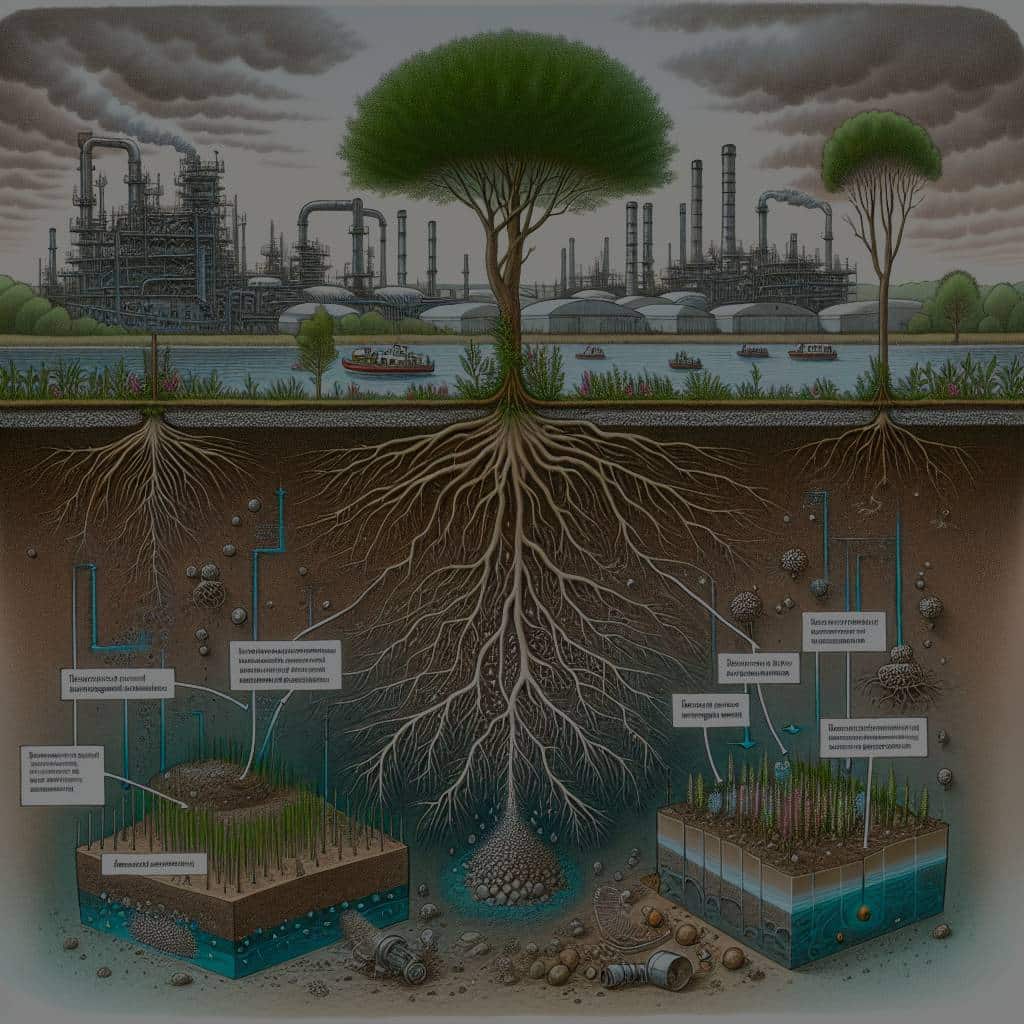Can Phytoremediation Techniques Clean Up UK’s Contaminated Industrial Sites?

Contaminated industrial sites in the UK may be a health hazard and an environmental concern, but there’s a high possibility that these wastes could be remediated. Phytoremediation, a process where plants are used to clean contaminated soils, has shown promising results in other parts of the world. This article explores the potential for phytoremediation in the UK, focusing on the current state of the environment and the role that plants could play in soil and metal remediation.
Understanding the scale of the problem
Industrialization has left a lasting mark on the UK’s landscape. Whether it’s the remnants of coal mining in Wales or the industrial heartlands of the Midlands, heavy metal contamination is a severe environmental issue. Industrial activities have led to a build-up of toxic pollutants in the soil and bodies of water, posing a significant health risk to humans and wildlife alike.
Also read : How Can Smart Assistants Improve Accessibility for Disabled Individuals in the UK?
Metals like lead, cadmium, and mercury are often found in high concentrations in these areas. They can seep into groundwater, contaminate crops, and enter the food chain, causing a myriad of health issues. The situation is dire, and traditional remediation techniques are often expensive and disruptive, leading to an urgent need for viable alternatives.
Unearthing the potential of phytoremediation
Phytoremediation is a process where plants are used to remove, stabilize, or destroy contaminants in soils, sediments, and water. This green technology capitalizes on the ability of some plants to take up specific contaminants in their biomass. It’s a cost-effective and eco-friendly solution to soil decontamination, with less physical disruption compared to traditional methods.
Have you seen this : Dive into the unexpected: the allure of mystery boxes
Several plant species, known as hyperaccumulators, have been identified for their ability to absorb heavy metals from the soil. These plants can tolerate high levels of metal, taking it up through their roots and storing it in their leaves and stems. The plants can then be harvested and disposed of, taking the pollutants with them. This technique, known as phytoextraction, has been proven to be very effective in remediating contaminated soils.
The benefits of phytoremediation
Using plants to clean up contaminated sites has numerous benefits over traditional remediation techniques. For starters, it’s a less invasive method, which means it causes less disruption to the local environment. The use of plants also brings additional benefits, such as improved soil structure and biodiversity.
Phytoremediation also offers a more cost-effective solution to soil and water clean-up. Traditional remediation methods can be expensive, not to mention time-consuming. With phytoremediation, once the plants are established, they can continue to remediate the soil for several growth cycles, making it a sustainable long-term solution.
Another crucial benefit is the potential to reuse the biomass produced from these plants. Recent research has investigated the possibility of using the harvested biomass as a source of bioenergy. This means that phytoremediation could not only clean up contaminated sites but also contribute to renewable energy production.
Implementing phytoremediation in the UK
Given the potential benefits, it’s not surprising that there’s a growing interest in implementing phytoremediation techniques in the UK. The country has a rich diversity of plants, some of which have been identified as potential hyperaccumulators, including certain types of willow, poplar, and ferns.
However, implementing phytoremediation at a large scale is not without its challenges. It requires careful monitoring and management to ensure the plants are effectively removing the heavy metals without causing further environmental damage. For instance, if the harvested biomass is not properly disposed of, the pollutants could end up back in the environment.
In addition, the success of phytoremediation largely depends on the type of contaminants present, soil conditions, and the species of plant used. Therefore, each contaminated site needs a tailored approach, requiring extensive research and planning before the technique can be deployed.
Looking towards a greener future
Phytoremediation holds great promise for the UK’s contaminated industrial sites. It promises a more sustainable, cost-effective, and environmentally friendly solution to a problem that has plagued the country for decades. However, it’s not a quick fix. Phytoremediation is a long-term strategy that requires careful planning, management, and research to ensure its success.
But with a growing body of research supporting its effectiveness, and increasing public awareness about environmental issues, the future looks bright for phytoremediation in the UK. It offers a beacon of hope for a cleaner, greener future where industrial landscapes are not just reminders of a polluted past, but sites of ecological rejuvenation and restoration.
The Role of Specific Plant Species in Phytoremediation
The success of phytoremediation in the UK depends largely on the selection of appropriate plant species. Some species are naturally equipped to absorb heavy metals such as lead, cadmium, and mercury from contaminated soils. These species, known as hyperaccumulators, play a crucial role in phytoremediation.
According to research data available on Google Scholar and Scholar Crossref, several species of willow, poplar, and ferns native to the UK have shown promising results in absorbing heavy metals. The process involves the plant roots absorbing the metal ions from the soil. The metals then travel to the leaves and stems, where they are stored until the plant is harvested.
This ability to use natural resources for environmental remediation is a testament to the power of environmental science. However, it is essential to underscore that not all plants are suitable for this role, and the choice of species depends on the specific contaminants in the soil and the local soil and climatic conditions.
Moreover, preprints.org reports that further studies are being conducted to ascertain the efficiency of other plant species in phytoremediation, potentially expanding the list of plants that can be used for this purpose.
Exploring the Potential of Biomass Reuse
An exciting aspect of phytoremediation is the possibility of reusing the plant biomass harvested from these processes. Once the plants have accumulated the toxic metals and are removed from the site, they become a valuable resource. According to recent studies, the biomass can potentially be converted into bioenergy, adding another dimension to the benefits of phytoremediation.
The conversion of biomass into energy is an intricate process. It involves the careful extraction of heavy metals from the plant matter, leaving behind organic material that can be processed into biofuel. It’s a win-win situation – we get to clean up the environment and produce renewable energy simultaneously.
However, it’s important to note that the process of extracting metals from the plant biomass needs to be managed carefully. If not done correctly, it could lead to the reintroduction of these metals into the environment, nullifying the benefits of phytoremediation.
Conclusion: Phytoremediation – A Beacon of Hope for UK’s Contaminated Sites
The rise of phytoremediation as a solution for the UK’s contaminated industrial sites signals a positive step towards environmental remediation. By utilising specific plant species to absorb heavy metals from the soil, we can leverage nature’s resources to clean up our environment and potentially produce renewable energy.
However, it’s clear that phytoremediation is not a quick fix but a long-term strategy that needs careful planning, management, and ongoing research to be successful. It requires a tailored approach for each contaminated site, taking into consideration the specific contaminants present, the soil conditions, and the most effective plant species for the task.
With the growing support of environmental science research and increasing public awareness about environmental issues, phytoremediation is poised to play a significant role in the UK’s efforts to manage its industrial past. It symbolises a greener, cleaner future where industrial sites are not just reminders of a polluted past but become symbols of ecological rejuvenation and restoration. It indeed provides a beacon of hope for environmental remediation, promising a future where we live in harmony with our environment while benefiting from its bountiful environmental services.
